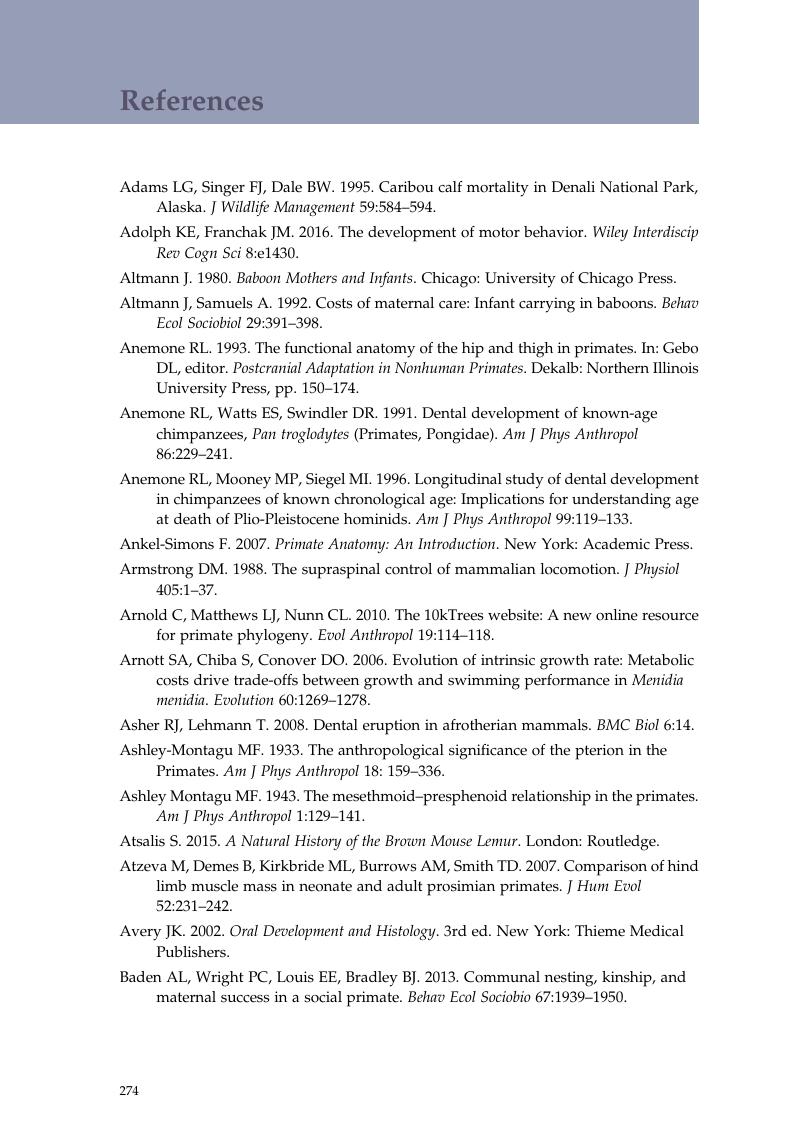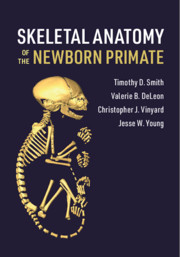Book contents
- Skeletal Anatomy of the Newborn Primate
- Skeletal Anatomy of the Newborn Primate
- Copyright page
- Contents
- Foreword
- Preface
- 1 Introduction
- 2 Primate Development and Growth
- 3 Why Ontogeny Matters
- 4 The Skull
- 5 Dentition
- 6 The Postcranial Axial Skeleton
- 7 The Pectoral Girdle and Forelimb Skeleton
- 8 The Pelvic Girdle and Hindlimb Skeleton
- 9 The Newborn Primate Body Form: Phylogenetic and Life-History Influences
- 10 Ontogeny of Feeding
- 11 Ontogeny of Locomotion
- References
- Index
- Atlas
- References
References
Published online by Cambridge University Press: 23 March 2020
- Skeletal Anatomy of the Newborn Primate
- Skeletal Anatomy of the Newborn Primate
- Copyright page
- Contents
- Foreword
- Preface
- 1 Introduction
- 2 Primate Development and Growth
- 3 Why Ontogeny Matters
- 4 The Skull
- 5 Dentition
- 6 The Postcranial Axial Skeleton
- 7 The Pectoral Girdle and Forelimb Skeleton
- 8 The Pelvic Girdle and Hindlimb Skeleton
- 9 The Newborn Primate Body Form: Phylogenetic and Life-History Influences
- 10 Ontogeny of Feeding
- 11 Ontogeny of Locomotion
- References
- Index
- Atlas
- References
Summary

- Type
- Chapter
- Information
- Skeletal Anatomy of the Newborn Primate , pp. 274 - 303Publisher: Cambridge University PressPrint publication year: 2020



